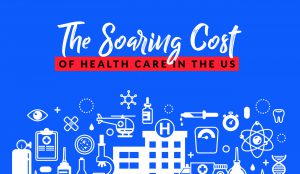Tackling the Truth about Opioid Addiction: 5 Key Tips to Address Patient Fears
A common scenario: It’s 3:00pm on a Tuesday and you are discharging a patient from the medical-surgical unit /emergency room/ambulatory surgical unit. You review their discharge instructions with them, to make sure they understand their recovery process and limitations after discharge. Then you hand them a prescription for a narcotic analgesic. They look you in the eye and say, “I’m a little bit nervous to take these at home. I don’t want to become addicted!”
You’re reading one of our “Nursing Career Guide” articles. Need to practice for your upcoming exam? Take our free NCLEX practice test -- no registration required! ✨
Most nurses have been in this situation. With national headlines appearing daily regarding prescription drug abuse and deaths from overdose, it’s natural that patients might worry about falling into this trap. Although there is a risk of misusing prescription pain relievers, most patients do not fall victim to abuse or addiction.
What is the best way to address a patient’s fears? Education is essential, and presenting patients and their family members with the following facts can be useful:
1. There is a difference between opioid tolerance and addiction.
Even when used appropriately, it is possible to develop a tolerance to opiate medications. Tolerance is the reduced response to a drug with its repeated use. It means that a person requires increased dosage to effectively manage pain, because the body has adjusted to the current dosage.
Tolerance is more common in treatment of chronic pain, but can also occur with acute pain related to a slowly resolving health issue. If a patient has a condition causing chronic pain, the patient may have a standing regimen of opiate medication, but over time the body adapts to the dosage, so the effects of medication are diminished. An increased dose is necessary to manage the pain.
The following video visualizes the development of opioid tolerance.
Addiction is the psychological and physical inability to stop taking a drug, even though it is harming the person’s life in any area: medical, psychological, relationships, employment, or legal. The medication is not taken for its original purpose, but to attempt to get high or simply cope with life; the person has no control over their use of the drug. (Addiction can also involve activities, such as gambling, eating, or working. These are considered behavioral addictions.)
2. Patients without a history of substance abuse are far less likely to become addicted.
According to the American Society of Addiction Medicine, addiction is “a treatable, chronic medical disease, involving complex interactions among brain circuits, genetics, the environment, and an individual’s life experiences.”
If a patient admits to a history of substance abuse and has fears about taking prescription opioids, the prescribing provider should be informed. The risk of addiction is higher with a history of any substance abuse; alternative methods of pain control and prevention of withdrawal may be considered.
A patient may be prescribed a short-term round of an opioid, with additional support and follow-up. Their pain should be managed with the least risk of relapse. If possible, the patient can be followed by a social worker, home health nurse, or additional follow-up visits with the provider who prescribed the medication.
3. If a patient goes home and takes a medication for a few days, as prescribed, their risk of abuse or addiction is small.
Every medication carries a risk. For patients who take an opioid for a short time (less than three days) in limited doses, the risk for abuse is less than 10 percent. But even five days of continued use increases the risk of dependence.
If the medication is extended, the patient should follow up with the primary care provider to discuss the effectiveness and side effects of the prescription, as well as to consider non-opioid options. The nurse should educate the patient and the patient’s family about warning signs of dependence.
4. Learn to recognize warning signs.
Part of the nurse’s responsibility when providing discharge instructions is to educate the patient and the patient’s family about early signs of opioid dependence or abuse. These signs include taking higher doses than prescribed; taking the drug when not in pain; “doctor-shopping,” which is seeing several doctors to obtain prescriptions; mood changes; and being dishonest about the use of opioid medication when speaking with family members and medical professionals.
If the patient or others notice any of these signs, immediately seek the help of a professional. Check the following video to learn all the signs of a developing addiction.
5. Be mindful of the side effects and contraindications when taking medications.
Patients who are fearful of opioid addiction are also fearful that it can lead to overdose or death. Common side effects are constipation, nausea, drowsiness, and mental fog. Extended use can cause a weakened immune system, slow respirations, hallucinations, and an increased risk of hepatitis.
A major cause of overdose or death is using opioids in conjunction with alcohol. Alcohol, which is a depressant, interacts negatively with opioids by increasing the side effect of respiratory depression, causing an immediate medical crisis.
A complete drug history should be obtained before prescribing an opioid. Medications that may interact with opioids include:
- Anti-seizure drugs
- Antidepressants
- Antifungals
- Anti-retroviral drugs
- Insomnia drugs
- Drugs for psychiatric disorders
- Muscle relaxers
- Sedatives
- Other opioid medications
Armed with the facts, you will be better prepared to answer your patient’s questions, address their concerns, and provide them a sense of comfort as they prepare manage their pain with an opiate prescription.
 By
By 



